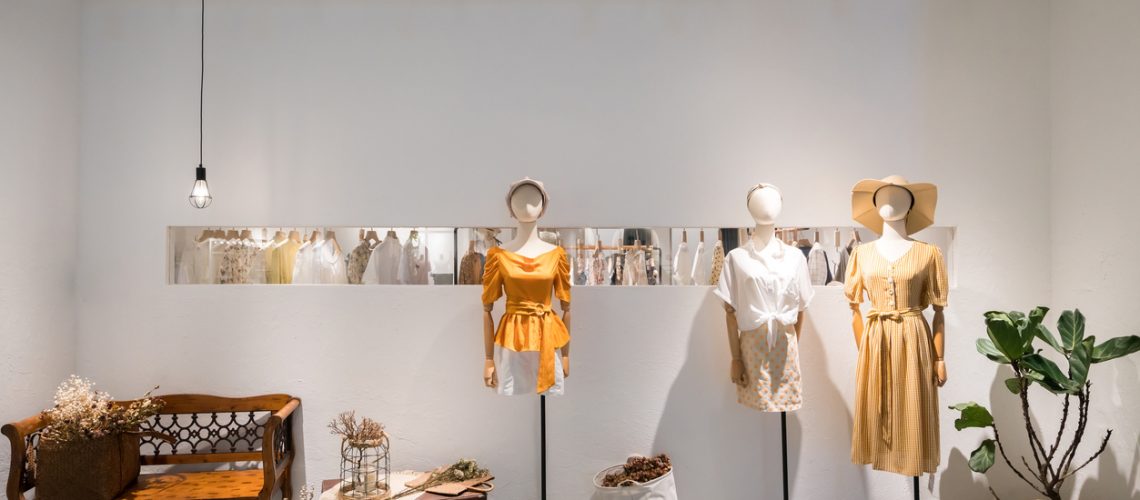Unveiling the Tricks Behind Cost Effective Boutique Fashion
Unveiling the Tricks Behind Cost Effective Boutique Fashion
Blog Article
A Deep Dive Into the World of High-Fashion Runways: Comprehending Clothing as Art
Developers, much like skillful musicians, weave intricate narratives via form, color, and fabric, redefining and challenging traditional norms charm standards. As we explore these sartorial eyeglasses, we must ponder: what duty does fashion play in forming social values, and just how does it show the ever-changing tapestry of human emotion and identity?
The Advancement of Runway Shows
The trajectory of runway shows has actually changed dramatically over the decades, evolving from special sector events to captivating spectacles that mix fashion with art. Commonly, runway shows were intimate affairs, held in ateliers or tiny locations, primarily attended by customers and industry experts. These early presentations concentrated on the garments' workmanship and industrial practicality, supplying a straight and practical screen of seasonal collections.
As the fashion sector expanded, the nature of runway shows started to change. The 1970s and 1980s noted a turning point, with developers seeking to differentiate themselves with even more theatrical discussions. This period saw the increase of fancy collections, choreographed models, and thematic stories, proclaiming a new age where the path came to be an experiential system. The shows changed into a form of storytelling, where each collection conveyed a distinct narrative or concept.
In the last few years, innovation and social media sites have actually further reinvented path programs, making them available to a worldwide target market. Livestreaming and digital platforms have democratized style, enabling enthusiasts worldwide to witness these occasions in real-time (boutique fashion). This evolution mirrors a wider social change, where high-fashion runways act as a dynamic intersection of efficiency, innovation, and design
Designers as Enthusiast Artists
Just how have designers transcended their duties to become visionary artists? Developers in the high-fashion sector have blurred the lines between useful garment development and the conceptual realm of art. This makeover is apparent in the means they approach their collections, not simply as garments however as extensive expressions of emotion, culture, and identity. By embracing artistic disciplines such as sculpture, paint, and avant-garde installations, developers craft garments that challenge traditional style standards and elevate them to art forms.
Visionary developers attract inspiration from a myriad of resources, including abstract art, historical references, and personal stories. They have an one-of-a-kind ability to picture and emerge ideas that press the boundaries of standard style, frequently redefining visual paradigms while doing so. This innovative resourcefulness is showcased with significant shapes, cutting-edge products, and elaborate workmanship, which invite visitors to experience fashion as more than simply wearable items.
Moreover, the runway acts as a canvas for these artists, where lighting, music, and set layout coalesce to develop immersive experiences. These discussions are not merely displays of clothes but are managed performances that evoke emotion and prompt thought, verifying the designer's function as a true musician in the modern social landscape.
Cultural Influences in Style
Cultural tapestry weaves its elaborate patterns right into the textile of style, affecting designers worldwide. The dynamic interchange of cultural tales, traditions, and symbols educates and motivates collections that poise high-fashion runways. Developers meticulously draw from their heritage or engage with cultures distinct from their own, crafting garments that work as visual stories. This social dialogue not only enhances the visual diversity however likewise fosters a much deeper understanding and admiration of worldwide identities.
The influence of society on fashion is often seen in the reinterpretation of traditional garments and patterns. The use of Japanese kimonos, Indian saris, or African prints in modern style reflects a mix of cultural credibility and modern-day aesthetics. Designers such as Valentino's Pierpaolo Piccioli and Alexander McQueen's Sarah Burton have been resource recognized to integrate rich cultural motifs into their couture collections, equating background right into wearable art.

Development in Material and Style
Innovation in fabric and layout consistently reshapes the landscape of high-fashion, pressing borders and redefining possibilities. Over the last few years, technological advancements have actually significantly added to this development, presenting products that test traditional understandings. Textiles ingrained with smart fibers, with the ability of altering shade or regulating temperature, are no more constrained to the realm of sci-fi. Designers are increasingly discovering the integration of modern technology, such as 3D printing, which permits the production of complicated frameworks that were previously unbelievable.
Furthermore, sustainability has actually become a crucial theme in fabric innovation. The garment industry is experiencing a surge in the usage of eco-friendly materials, acquired from recycled plastics, natural fibers, and even eco-friendly parts. These advancements not only supply brand-new structures and looks yet also address essential environmental concerns. Designers are accepting these products to craft garments that are both conscious and visually striking of their environmental impact.
In terms of layout, avant-garde shapes and speculative forms are continually reinventing the runway. By integrating unconventional materials and advanced methods, developers cultivate garments that blur the line between fashion and art, setting brand-new criteria for imagination and expression in the high-fashion round.
Effect of Fashion on Society
Style possesses a profound influence on culture, offering as both a reflection of social identity and a driver for social change (boutique fashion). With its development, fashion has mirrored societal shifts, enveloping the zeitgeist of different eras.
Additionally, style has the power to bridge cultural voids, promoting understanding and admiration amongst diverse groups. As globalisation speeds up, the cross-cultural exchange of fashion concepts comes to be significantly considerable, advertising inclusivity and diversity. read The increase of streetwear, stemming from urban subcultures, shows how fashion can transcend socio-economic limits, giving individuals a means of self-expression and empowerment.
Fundamentally, fashion is not simply regarding looks; it is a dynamic pressure that influences values, attitudes, and societal progress (boutique fashion). By continually interacting with social and cultural currents, style stays an essential component of the collective human experience

Verdict
High-fashion paths work as vibrant fields where clothes goes beyond functionality to end up being an expressive art type. Designers, comparable to visionary musicians, manage collections that show identity, feeling, and cultural stories, testing standard aesthetic appeals. The blend of innovative textile and design, paired with elaborate collection designs, lights, and music, creates immersive experiences that celebrate cultural variety. This intersection of fashion and artistry not just astounds target markets around the world however likewise influences social perceptions and promotes a much deeper appreciation for cultural variety.

Social tapestry weaves its elaborate patterns right into the textile of style, affecting designers globally.Fashion possesses an extensive influence on society, serving as both a representation of cultural identity and a driver for social modification.
Report this page